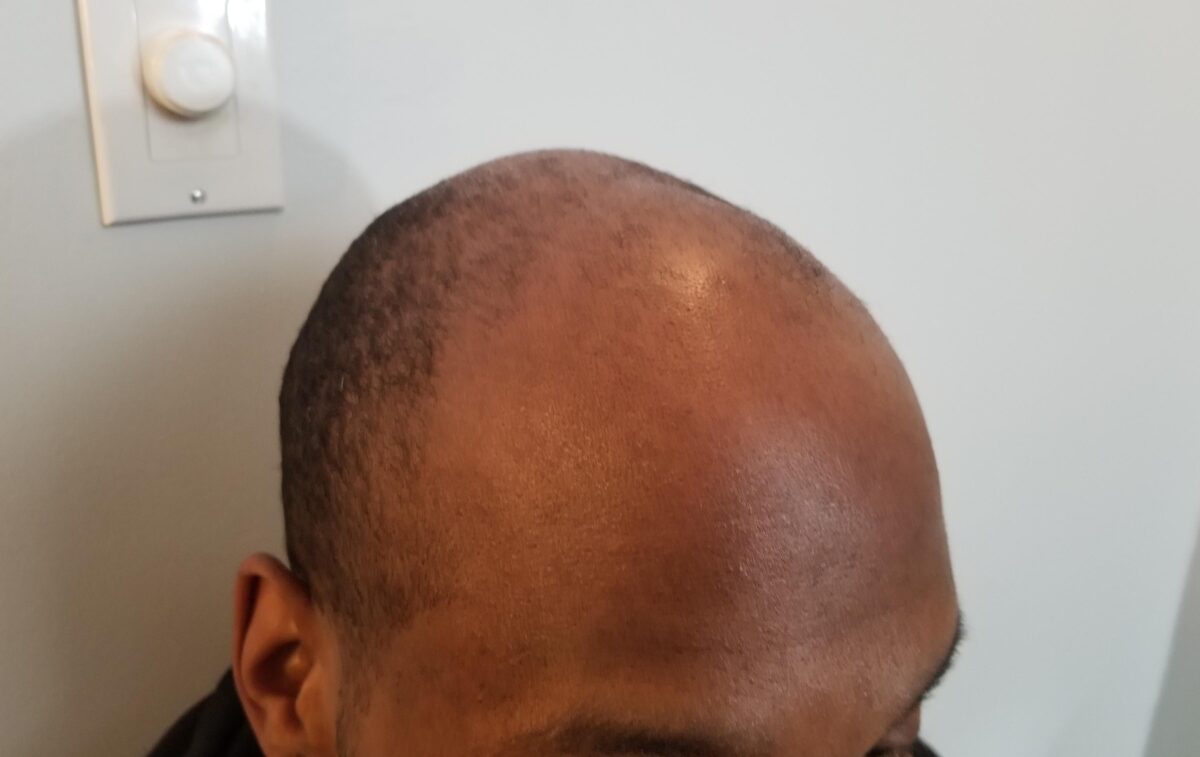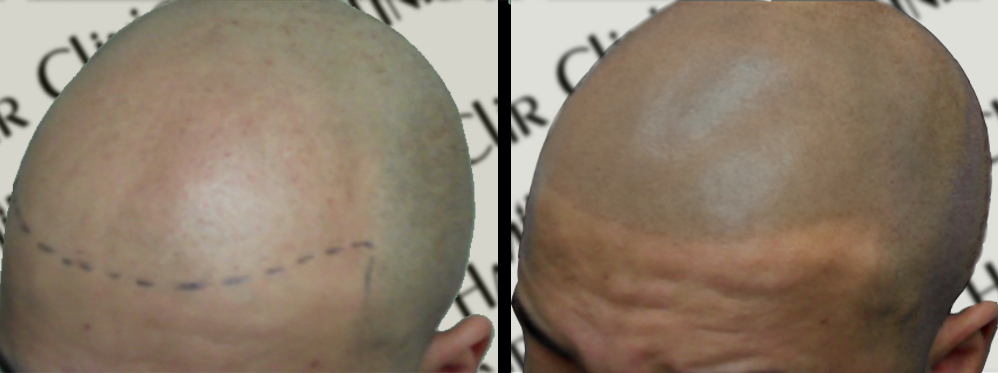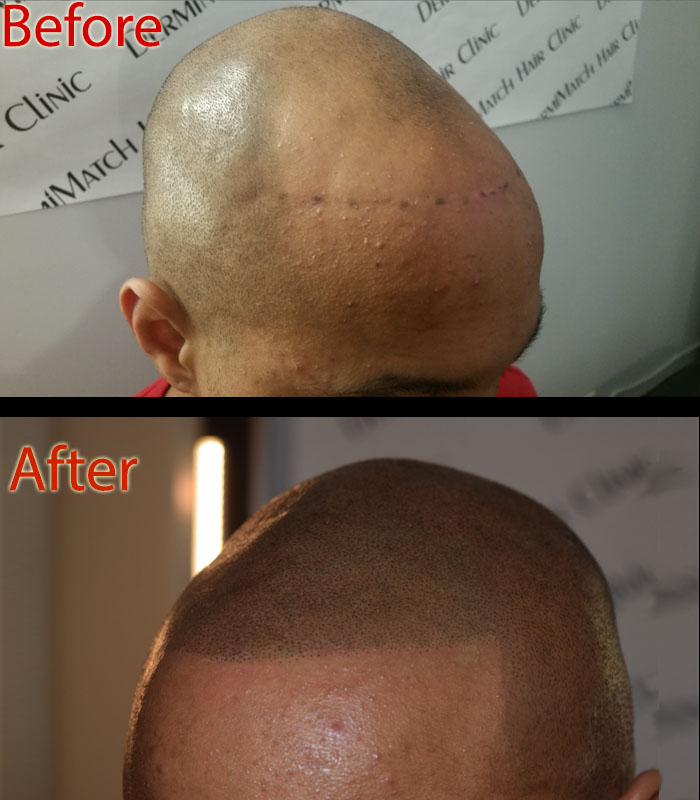Scalp microblading is a bad idea. There are a number of reasons too. While microblading is a good option for eyebrows, it does not work the same for hairline as scalp micropigmentation. Scalp micropigmentation is a technique to place thousands of tiny dots into the scalp that replicate the look of a shaved head. As microblading works wonders for eyebrows, some inexperienced scalp artists think that it can replicate the same results for hairline as well. Unfortunately, that is not right.
Scalp microblading does not provide sustainable results
Microbladed scalp is prone to blurring or turning blue upon healing. Besides, the technique really hurts when performed on the scalp. It involves cutting the skin with a blade, which can cause a lot of pain and make the whole treatment uncomfortable for the client.
In addition to this, such hair strokes do not move, which creates a fake look. Remember, natural hair moves all the time as opposed to scalp micro bladed hair. So it is not an option for people who are already wondering if the treatment is noticeable.
No experienced SMP technician in Phoenix advocates scalp microblading, as they are aware of the cons that come along with the procedure. Only an inexperienced, poorly trained artist will suggest clients go for hairline microblading for hair loss.
Unfortunately, microblading on the scalp does not look good and is more likely to blur. Worst still, the blurring happens in a solid color and is not easy to remove. Removal can cause significant damage to the surrounding hair.
For clients with oily skin, this is absolutely not the right option. The ink from microblading can easily migrate to the oils oozing out of the skin, causing blurring of those crisp hair strokes.
There is still more to come. If the untrained scalp artist mistakenly implants too deep, the result will be a blue or gray color. Why? Well, the ink is likely to intermix with blood vessels and alter the appearance of the pigment.
Microblading versus SMP
Microblading on scalp may look great initially but it is seriously not a step in the right direction. So scalp microblading is not worth it, especially if you have a better hair restoration treatment option available. Scalp micropigmentation is way better and safer than microblading for the scalp. When done by the best SMP artists, scalp micropigmentation gives you the results you have always dreamed of. An experienced scalp practitioner makes all the difference in the SMP result. No doubt, they use the best SMP pigment and tools too.
Well-trained and highly experienced SMP artists in Phoenix are available at DermiMatch Clinic. They are aware of the pros and cons of microblading for scalp and do not recommend the same. Rather, they leverage their scalp micropigmentation expertise to create the best results for thinning hair or a receding hairline. A client with alopecia areata or pattern baldness can benefit from SMP in Pheonix more than scalp microblading. Get help from the best in the business by scheduling a consultation with DermiMatch artists.



